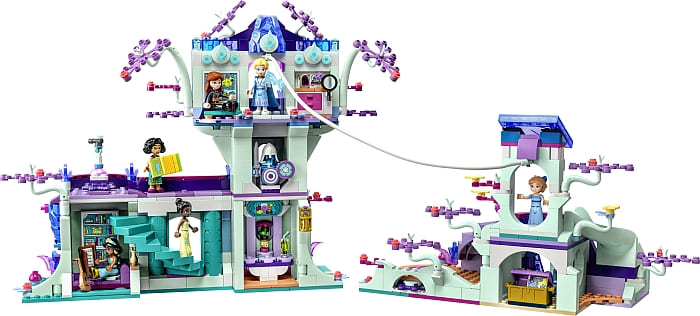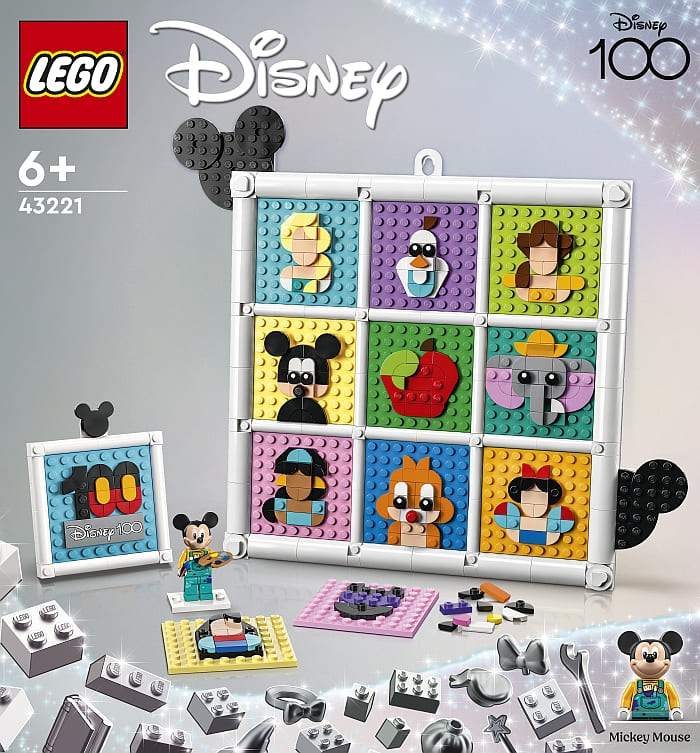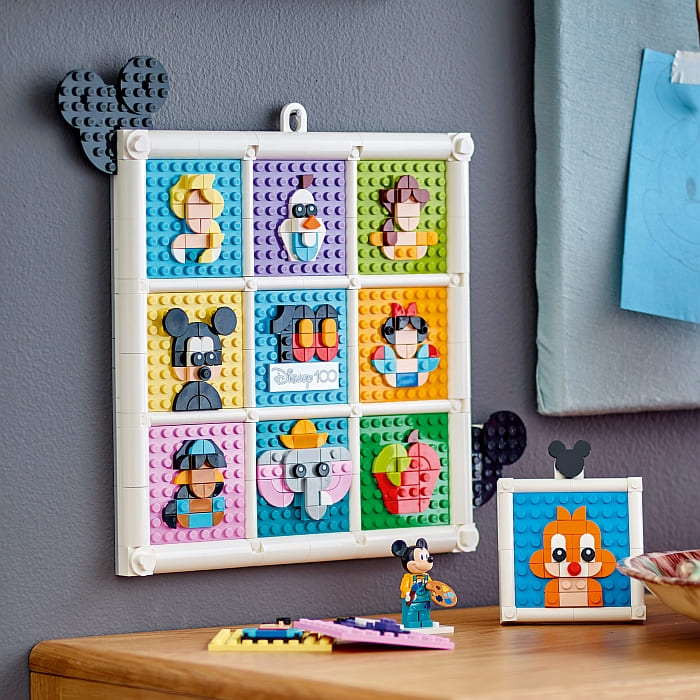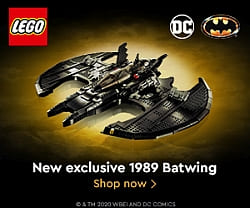Back in 2008-2009, LEGO released a whole series of sets related to the Indiana Jones franchise. They were very popular not just by fans of the movies, but also because of World War I and II style military vehicles, minifigs in military uniforms, and useful accessories. They were excellent for military dioramas and depicting historic events in LEGO form. After a long hiatus, the LEGO Indiana Jones theme is back, I suppose to get ready for the release of the Indiana Jones and the Dial of Destiny film scheduled for release this summer. Three sets were released so far, with a fourth one coming soon. All four sets reference the older movies, but I expect that we will also get sets related to the new film.


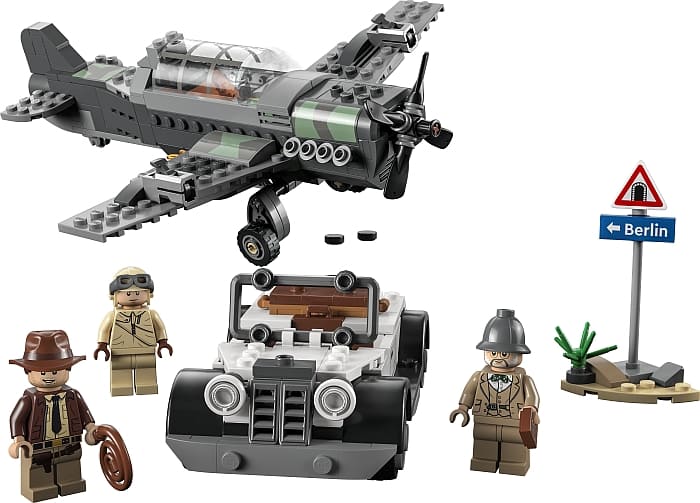
The #77012 LEGO Indiana Jones Fighter Plane Chase references the famous scene from Indiana Jones and the Last Crusade. It features a brilliant fighter plane and a vintage convertible car, as well as Indy himself, his father Professor Henry Jones Sr., and a fighter pilot. Both the car and the plane look excellent. I like that although they use newer parts, they carry the charm of older LEGO sets with simple features and exposed studs. The set comes with 387 pieces and retails for $34.99.
I think this set is worth it. Just like the first generation of Indiana Jones sets, it can be used for play, display, and for incorporating into other scenes. In the video above, JANGBRiCKS shows you the set in more detail, and if you want to check it out, it’s available at the Indiana Jones section of the Online LEGO Shop.
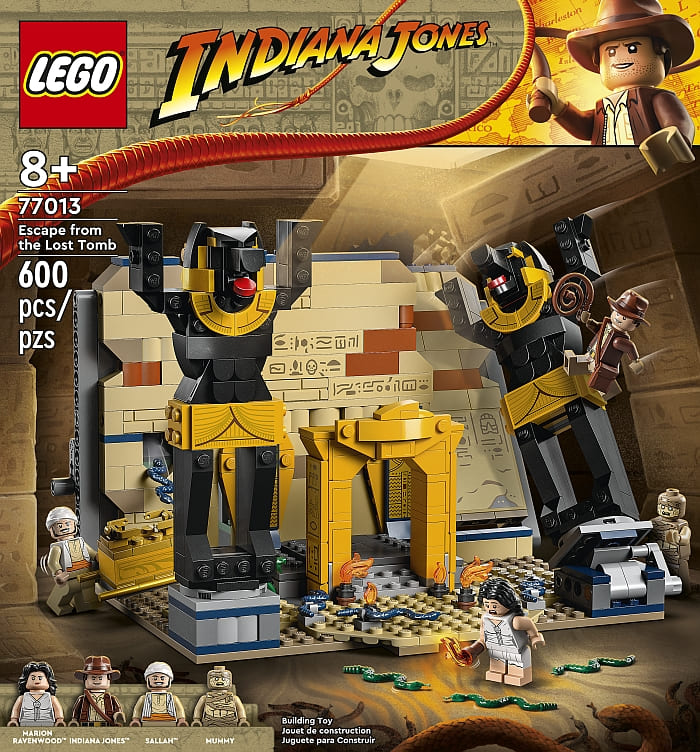
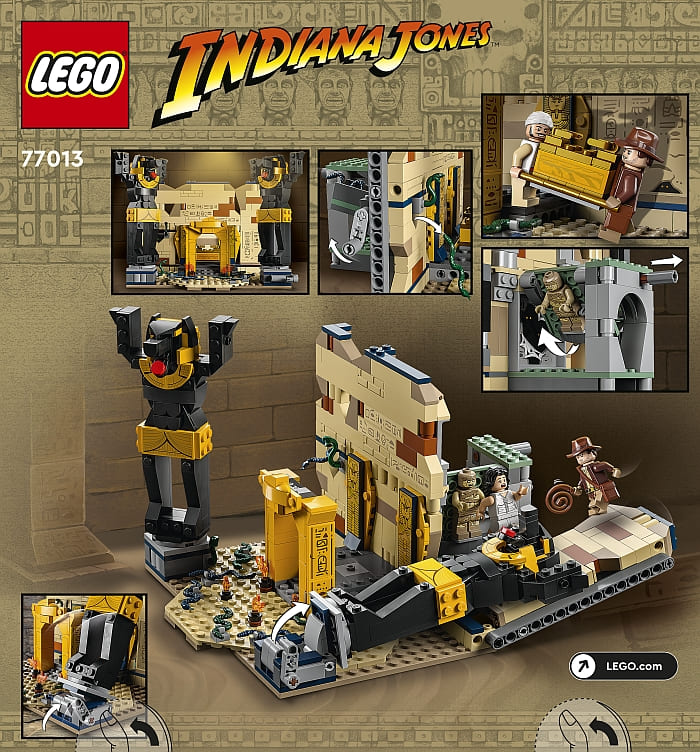
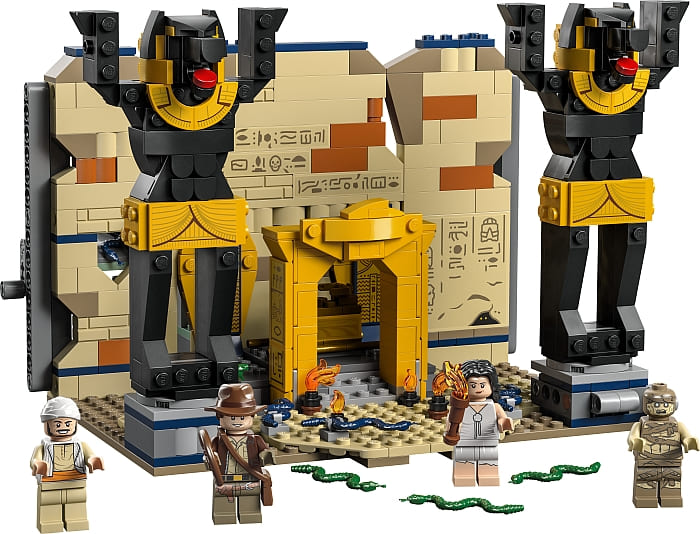
The #77013 LEGO Indiana Jones Escape from the Lost Tomb is from the Indiana Jones and the Raiders of the Lost Ark movie. Indy is searching for the Ark of the Covenant in the snake-infested Well of Souls and escapes by climbing the massive Anubis statue and finding the hidden passage. The set comes with 600 pieces and four minifigs; Indiana Jones, Marion Ravenwood, Sallah, and a mummy. The price is $39.99.
Honestly, this set doesn’t do much for me. It’s too simple as a playset and too plain as a display set, but that’s just my opinion. If you would like to check it out, the video-review is above, and the set is available at the Indiana Jones section of the Online LEGO Shop.


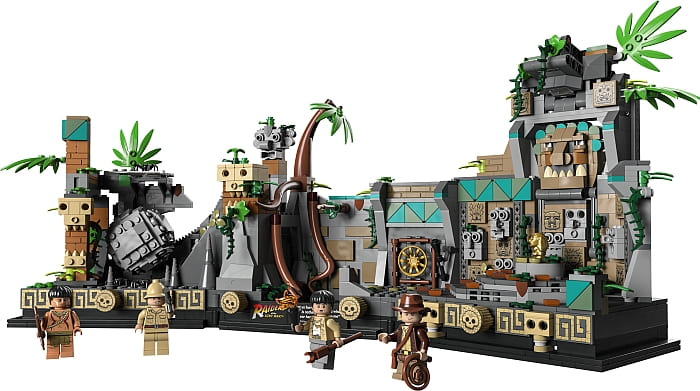
The last of the three new currently available sets is the #77015 LEGO Indiana Jones Temple of the Golden Idol from the Raiders of the Lost Ark movie. This is a recreation of the #7623 LEGO Indiana Jones Temple Escape from 2008. While the original set was wonderful in its own time, the updated version surpasses it in every way. The highly detailed (but not too tedious) brick-built decorative details, the printed parts, the mechanism of the play-features, the color combinations, and the minifigs are all a joy to build and behold. And there is a lot to learn from this set in terms of building techniques. Take a look at the video-review below to get an idea of what I’m talking about. I think you will be impressed! The included minifigs are Indiana Jones, Satipo, Belloq, and a Hovitos. The set comes with 1,545 pieces and retails for $149.99. Available at the Indiana Jones section of the Online LEGO Shop.
As you can see, there is a lot to like about the new LEGO Indiana Jones sets. There is also a fourth set that we already know about but haven’t been officially revealed yet; the #77014 LEGO Indiana Jones The Temple of Doom. This is also a recreation of an older set that was very popular in its time; the #7199 LEGO Indiana Jones Temple of Doom. We shall see if it’s also an improvement, but so far, the new LEGO Indiana Jones theme looks good! What do you think? Feel free to share your thoughts and own reviews in the comment section below!
And you might also like to check out the following related post:



